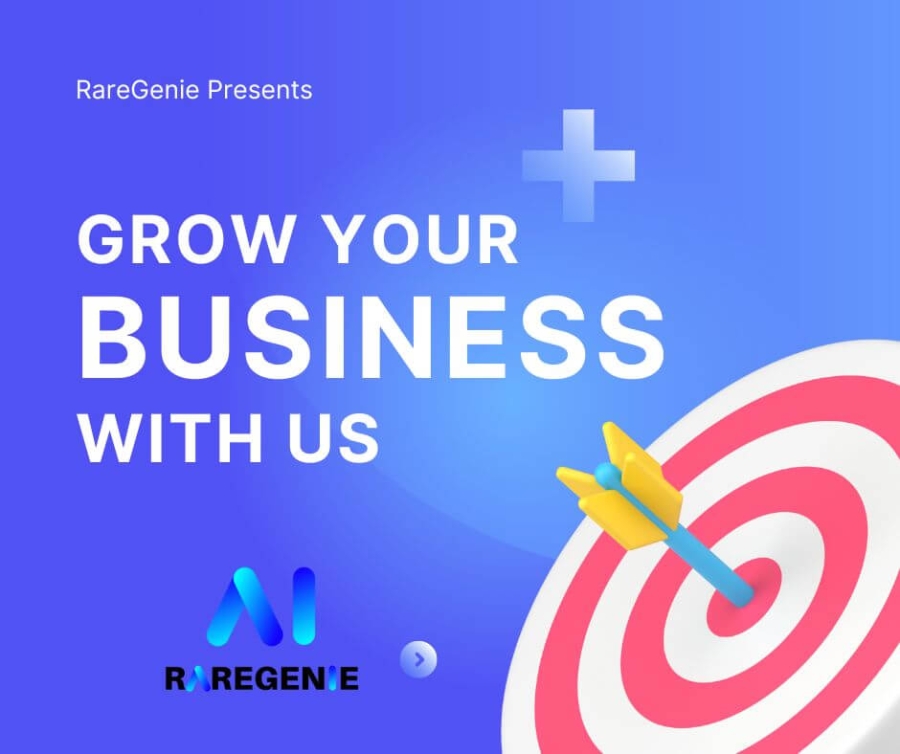Digital Ad Copy Written by AI in raregenie.com
Digital Ad Copy Written by AI in raregenie.com
Introduction
Digital advertising has become an essential aspect of marketing strategies for businesses worldwide. With the increasing need to reach a wider audience online, the demand for effective ad copy has grown significantly. Traditionally, copywriters were responsible for creating persuasive and engaging ad copy. However, recent advancements in artificial intelligence (AI) have led to the emergence of AI-generated ad copy, revolutionizing the way businesses approach their advertising campaigns.
What is Digital Ad Copy?
Digital ad copy refers to the text-based content used in online advertisements to attract and persuade potential customers. It is the written component of an ad that aims to capture the attention of the target audience, convey a message, and ultimately drive conversions. Digital ad copy can be found in various formats, including search engine ads, social media ads, display ads, and more.
The Importance of Effective Ad Copy
Effective ad copy plays a crucial role in the success of digital advertising campaigns. It has the power to engage users, build brand awareness, and drive conversions. Well-crafted ad copy can evoke emotions, create a sense of urgency, highlight unique selling points, and ultimately persuade users to take the desired action, such as making a purchase or signing up for a service.
AI and Digital Ad Copy
Artificial intelligence has made significant strides in recent years, and its impact on the field of digital advertising is undeniable. AI-powered algorithms and natural language processing techniques have empowered machines to generate ad copy that closely mimics human writing. AI-driven systems can analyze vast amounts of data, identify patterns, and generate compelling ad copy tailored to specific audiences.
The Rise of AI-Powered Ad Copywriting
The rise of AI-powered ad copywriting platforms, such as raregenie.com, has transformed the advertising landscape. These platforms leverage the capabilities of AI to generate ad copy quickly and efficiently. By using sophisticated algorithms, these systems can learn from existing successful ad campaigns, analyze user behavior, and create personalized ad copy that resonates with target audiences.
Benefits of AI-Generated Ad Copy
AI-generated ad copy offers several benefits for businesses. Firstly, it saves time and resources by automating the copywriting process. Instead of relying solely on human copywriters, businesses can leverage AI systems to generate multiple ad variations in a fraction of the time. Additionally, AI-driven ad copy can adapt and optimize in real-time, allowing for continuous improvement based on performance data.
Overcoming Challenges with AI-Written Ad Copy
While AI-generated ad copy offers significant advantages, there are challenges that need to be addressed. One such challenge is ensuring the human touch in AI-driven copy. Although AI systems can produce compelling copy, it is essential to maintain a sense of authenticity and emotional connection that only human writers can provide. Striking the right balance between automation and human creativity is crucial for successful AI-written ad copy.
Best Practices for AI-Generated Ad Copy
To maximize the effectiveness of AI-generated ad copy, it is important to follow certain best practices. Crafting compelling headlines is key to capturing the attention
of users and enticing them to engage with the ad. Tailoring ad copy for different platforms is essential, as each platform has its unique characteristics and audience expectations. Furthermore, optimizing ad copy for search engine optimization (SEO) can enhance its visibility and reach.
Ensuring Human Touch in AI-Driven Copy
To maintain the human touch in AI-driven copy, businesses should consider using AI systems as tools rather than relying on them entirely. Collaborating with human copywriters who can review, edit, and add their creative flair to the AI-generated copy can ensure that the final output is well-crafted and resonates with the target audience.
Crafting Compelling Headlines
Headlines are the first thing users see when encountering an ad, making them critical for capturing attention. AI systems can analyze large amounts of data to identify headline patterns that perform well. By using AI-generated insights, businesses can create compelling headlines that stand out and entice users to click and learn more.
Tailoring Ad Copy for Different Platforms
Different advertising platforms have their unique requirements and user expectations. AI-generated ad copy can be tailored to suit the specific platform, taking into account factors such as character limits, formatting options, and audience demographics. By customizing ad copy for each platform, businesses can maximize engagement and improve the overall effectiveness of their advertising campaigns.
Optimizing Ad Copy for SEO
Search engine optimization plays a vital role in improving the visibility and reach of digital ads. AI-powered systems can analyze keywords and search trends to optimize ad copy for SEO purposes. By incorporating relevant keywords and phrases, businesses can increase the chances of their ads being displayed to users actively searching for related products or services.
Measuring the Success of AI-Generated Ad Copy
Measuring the success of AI-generated ad copy is crucial to refine and optimize future campaigns. Businesses can analyze key metrics such as click-through rates (CTR), conversion rates, and engagement metrics to evaluate the performance of their ads. By continuously monitoring and analyzing data, businesses can make data-driven decisions and improve the effectiveness of their AI-generated ad copy.
The Future of AI in Ad Copywriting
The future of AI in ad copywriting is promising. As AI technology continues to evolve, we can expect more sophisticated systems capable of generating highly personalized and targeted ad copy. These systems will leverage advanced data analysis, machine learning, and natural language processing techniques to deliver more effective and engaging ad campaigns.
Conclusion
AI-powered ad copywriting is revolutionizing the digital advertising landscape. By leveraging the capabilities of AI, businesses can automate the process of generating compelling ad copy while saving time and resources. However, it is essential to strike the right balance between automation and human creativity to ensure the human touch in AI-driven copy. By following best practices and continuously monitoring performance, businesses can harness the power of AI to create impactful and successful advertising campaigns.
FAQs
1. Can AI-generated ad copy outperform human-written copy?
AI-generated ad copy can be highly effective, but it's important to consider the human touch and emotional connection that human-written copy can provide. A combination of AI-generated insights and human creativity often yields the best results.
2. Is AI-generated ad copy suitable for all industries?
Yes, AI-generated ad copy can be tailored to suit various industries and target audiences. However, some industries that require a more personal touch or specialized knowledge may benefit from additional human input.
3. How can businesses ensure the quality of AI-generated ad copy?
Businesses can ensure the quality of AI-generated ad copy by collaborating with human copywriters who can review and edit the output. This helps maintain the desired brand voice, authenticity, and emotional appeal.
4. Can AI-generated ad copy adapt to changing trends and user behavior?
Yes, AI-generated ad copy can adapt in real-time based on performance data and user behavior. These systems can continuously learn and optimize to improve the effectiveness of the ad campaigns.
5. How can businesses measure the success of AI-generated ad copy?
Businesses can measure the success of AI-generated ad copy by analyzing key metrics such as click-through rates, conversion rates, and engagement metrics. These insights help businesses refine their strategies and optimize future campaigns.









Comments (0)